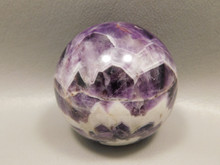What is the difference between precious stones and semi-precious stones?
The dictionary describes semi-precious stones as being less valuable than precious stones. But, of course, that isn’t always accurate. The separation of precious gemstones and semi-precious gemstones actually dates back to Ancient Greece. But in those days, science was limited and almost all blue stones were called sapphires, green stones were called emeralds, etc. Then sometime in the 1800’s "precious gemstones " began to refer only to diamonds, rubies, emeralds, and sapphires. These stones were considered more valuable because of their rarity, their beauty and their hardness on the Mohl’s scale (a scaled used to measure how hard a stone is compared to other stones). But an aquamarine is essentially the same mineral (beryl) as an emerald, yet wasn’t considered as valuable? Tanzanite is rarer than sapphire, but not precious?
It actually was all in the marketing. Unfortunately, the term has been exploited to make us believe the top four are the most valuable gemstones. A high grade tsavorite (green garnet), an alexandrite, or a good Paraiba Tourmaline can sell for more money than a low-grade emerald or ruby. The greatest promoters in the world are the diamond dealers who convinced us all that this colorless stone is the king of gemstones! And what an ingenious idea to take an ugly brown diamond and promote it as a valuable “chocolate diamond”.
Also, the term is still very misleading, and the gem trade would really like to see the demise of the terms and the perception of value changed. Though seldom used by gem dealers, even the U.S. government likes to use the term when importing stones. These terms still persist and “precious gemstone” in many of the general public’s mind has been expanded to include all facet grade stones - amethyst, topaz, garnets, spinels, tourmalines, etc. and to include some other gemstones such as opals and pearls. If you look up many of these stones in the dictionary it will say “a precious stone”. But amethyst is really just purple quartz; quartz is the most common stone on earth. Amethyst can be very cheap in tumbled stones or very expensive for deep purple and flawless faceted stones. And some of the “facet grades” are actually cut into cabochons, for instance star rubies and some sapphires.
So, what is the difference between a precious gemstone and a semi-precious gemstone?
Absolutely nothing. All natural gemstones are valuable. If only because they can’t be easily replaced when the supply runs out and they are expensive to recover. Semiprecious gemstones are valued for their color, their pattern, their origin, their rarity, and yes-their hardness or wearability too.
Beauty is in the eye of the beholder and what is valuable to you, others may not value. But grandma's pendant with the unique semiprecious gemstone agate cabochon may be invaluable.
Now I urge you to break out of the jewelry store trap and try exploring the many beautiful and unique stones out there.
Happy Hunting!
 US Dollar
US Dollar
 Australian Dollar
Australian Dollar
 Euro
Euro
 CAD
CAD

